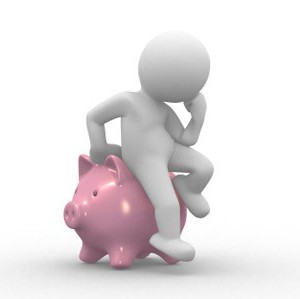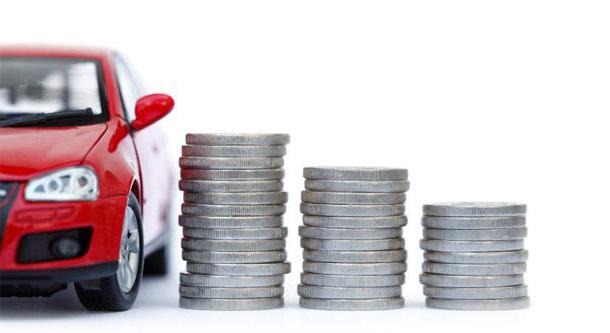Every person who is at least a little interested in the economy understands that any enterprise has income and bears expenses, carrying out any economic activity.
At the same time, they can be taken into account and interpreted in different ways, which opens up a large field for research on the effectiveness of production activities.

Issues that affect economic costs were raised by well-known scientists, for example, Karl Marx, John Forbes Nash and others. The relevance of this issue is determined by the eternal search for the golden rule of business: maximizing income while minimizing costs.
Today, companies are hiring specialists on this issue to find ways to reduce costs or ways to invest capital in profitable industries.
In economic theory, value production costs one type of product is determined by the maximum value of resources that they could have if they were used to produce another variety of products.
Economic costs. Essence
Perhaps economics is one of the few sciences dealing with a large amount of mathematical data, where any phenomenon can be described in many different words and definitions.
Therefore, there are quite a few definitions of what economic costs are. But if you carefully analyze each of them, then the meaning of all of them comes down to one.
Economic costs of production are all expenses of a business entity incurred in the process of manufacturing products or providing services.

That is, it is absolutely all the costs: light, gas, water, heating, fuels and lubricants, salaries, resources, reserves, equipment maintenance, depreciation of fixed assets and many other types of expenses.
They study their essence in order to find ways to optimize and reduce the level of enterprise expenses to increase profits.
Cost types
Economic costs at the place of occurrence are divided into:
- external;
- internal.
Under external understand such costs that the company incurs for the purchase of any resources, raw materials or materials, energy or other values acquired from third parties.
This may be fuel purchased at a gas station, metal structures necessary for further use in creating a new labor result. Also, they are the costs of paying for wage labor (payment of wages, accruals and other material rewards), maintenance of their own equipment in the event that it is carried out by their own workers, etc.
Internal economic costs - these are the costs associated with the movement, as well as the use of resources that at the time of transactions with them are owned by the enterprise.

They characterize the cost of using their own resources for the manufacture of selected goods or the provision of services, instead of using them in another production. They are also described by the imaginary lost income of the enterprise from the current use of its material goods.
What do they include?
Economic costs include:
- Attracted (bought) resources in the market.
- Those resources that are available to the enterprise and do not directly participate in the turnover.
- The normal level of profit, which displays and pays off the risk of doing business.
All three of these points, the enterprise management should include or impute in the price. This is necessary for the successful functioning of the company in the market with due profitability level. Therefore, there is also the concept of “imputed costs”, which is synonymous with economic costs.
Not All Internal Costs Are Displayed in Accounting
Despite the above types of economic costs, it is worth pointing out some of the differences that occur when comparing accounting data and the results of economic analysis.
If, according to the balance sheet of the enterprise, the actual profit is visible, then this does not always indicate the presence of a positive economic result of activity - it may be negative. Why is that?
Accounting costs will always be less than economic
Internal economic costs of the enterprise are not recorded in accounting, as they do not imply capital flows. This is the essence of the difference between accounting and economic analysis.
If economic costs separate internal and external, then accounting include only external costs. That is, the first type of cost includes accounting.
Why know the level of economic costs?
Such knowledge is needed in order for any director, head or any other management body to be able to evaluate the further feasibility of doing business in their industry.

For example, take a small company that produces and sells clothing for adults. Suppose she has the following monthly costs:
- Purchase of fabric - 50 thousand rubles.
- Purchase of threads - 10 thousand rubles.
- Purchase of snakes, buttons - 30 thousand rubles.
- Maintenance of work machines and other equipment - 5 thousand rubles.
- Remuneration of workers and management personnel - 60 thousand rubles.
- The costs of light, gas, water, necessary for the production and maintenance of jobs - 40 thousand rubles.
- The rent for fixed assets is 20 thousand rubles.
- Costs of sales - 15 thousand rubles.
At the same time, every month it is possible to produce 1000 units of goods (clothing) and to sell such a batch for 300 thousand rubles.
If you add up all the costs that are needed to produce such a batch of products, then the total amount of expenses is 230 thousand rubles.
In order to evaluate production efficiency, you can find the cost and profitability of production of 1 unit of output.
In this case, the cost is 230 rubles per unit of goods. At the same time, profitability is at the level of 30%.
It is not enough to know only the cost and profitability to give an economic assessment of the feasibility of production
Seemingly good performance. But in order to make effective management decisions on investing in fixed assets or reducing production, you need to understand the level of economic costs.

As indicated above, they are composed of internal and external. So, all 8 points of monthly expenses are external.
Internal ones cannot be counted so simply, since they depend on many uncertain factors.
We find out the level of internal costs
Suppose a business owner would place this amount (230 thousand rubles) in a deposit account with a bank. Given that the average percentage in the Russian Federation on deposits in rubles is at the level of 9-10% per annum, he would receive a monthly profit of 1725 rubles.
If we compare the income from the deposit with the profit from the business, it becomes clear that your business is much more successful than placing money in a bank at the proposed percentage.
In a similar way, one can compare the production of clothes with other types of business.
Suppose an entrepreneur has the opportunity to engage in mining. The average profitability of this industry in the Russian Federation is at the level of 53-54%.
We will calculate the economic costs
Let's make a calculation: an entrepreneur can invest 230 thousand rubles a month in a new business. If everything goes well, then every month he would receive an income of 352 thousand rubles, and the profit would be 122 thousand rubles.

In order to calculate the level of internal costs in this example, it is necessary to subtract 70 thousand rubles from 122 thousand (profit received from the production and sale of clothing).
We get the result: internal costs are 52 thousand rubles, which means the alleged lost income from the inefficient use of their capital by an entrepreneur.
In order to calculate the total economic costs, it is necessary to add external ones to internal ones - and we get 282 thousand rubles.
Based on this indicator, you can recalculate the level of profitability of investment per 1 unit of production, taking into account the allegedly lost income - it will turn out 6%.
From all this it follows that an entrepreneur could earn 52 thousand rubles more each month, and therefore, perhaps he should reconsider his policy and begin to engage in mining.
But of course, the above calculations are theoretical. In fact, the cost structure of any enterprise is much wider, and its level depends on many factors that can be influenced by both its managers and circumstances generally independent of them.
Conclusion
Economic costs firms, enterprises companies are used in running management accounting to clarify the assessment of financial results obtained from economic activities.

Knowing their structure and size, we can understand whether all available resources are effectively used in the process of manufacturing products or providing services.
Knowing how to properly use the results of the analysis of economic costs, you can easily find ways to optimize them, increase the efficiency of a unit of each spent good, and also get rid of unnecessary costs when dealing with tangible or intangible resources.
And despite the fact that questions about general economic costs were raised regularly by the most famous scientists of the past and present, this topic will never become irrelevant.
This is due to the fact that each manufacturer has its own formula for success, which can change from month to month. And it is impossible to find the only correct key that would suit absolutely everyone.